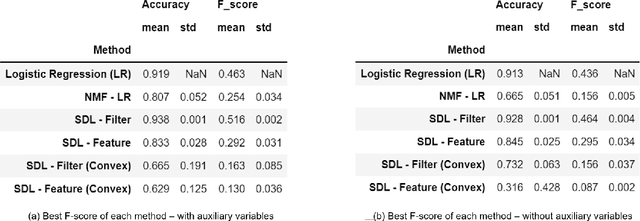Supervised Dictionary Learning with Auxiliary Covariates
Paper and Code
Jun 14, 2022



Supervised dictionary learning (SDL) is a classical machine learning method that simultaneously seeks feature extraction and classification tasks, which are not necessarily a priori aligned objectives. The goal of SDL is to learn a class-discriminative dictionary, which is a set of latent feature vectors that can well-explain both the features as well as labels of observed data. In this paper, we provide a systematic study of SDL, including the theory, algorithm, and applications of SDL. First, we provide a novel framework that `lifts' SDL as a convex problem in a combined factor space and propose a low-rank projected gradient descent algorithm that converges exponentially to the global minimizer of the objective. We also formulate generative models of SDL and provide global estimation guarantees of the true parameters depending on the hyperparameter regime. Second, viewed as a nonconvex constrained optimization problem, we provided an efficient block coordinate descent algorithm for SDL that is guaranteed to find an $\varepsilon$-stationary point of the objective in $O(\varepsilon^{-1}(\log \varepsilon^{-1})^{2})$ iterations. For the corresponding generative model, we establish a novel non-asymptotic local consistency result for constrained and regularized maximum likelihood estimation problems, which may be of independent interest. Third, we apply SDL for imbalanced document classification by supervised topic modeling and also for pneumonia detection from chest X-ray images. We also provide simulation studies to demonstrate that SDL becomes more effective when there is a discrepancy between the best reconstructive and the best discriminative dictionaries.
 Add to Chrome
Add to Chrome Add to Firefox
Add to Firefox Add to Edge
Add to Edge